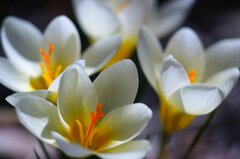-
Posts
-
By NewSonyUsER · Posted
I'd really like to find a package deal for an a7R (mk I, second generation) which includes the neckstrap and box. I've searched Ebay and currently no one is listing what I'm looking for. They either have the camera only or a first generation a7R and a lot of them don't offer the Sony neckstrap or box it came in. I know your site doesn't have a formal 'Equipment For Sale' thread and granted Ebay is a better place to sell gear but I thought I'd see if any of the members have one and would like to upgrade to a newer model but don't think anyone would be looking for one that old. The cameras I've been using are in the 20 megapixel range and rather than jumping to a 40mp camera due to file size, the 36mp that the first a7R has was appealing to me and wouldn't break the bank. I've been using Canon and Nikon but really want experience a Sony. If a post like this is undesirable for this website, I understand but I thought I would ask. Thank you. -
By SonyFF32137 · Posted
Here's a good thread on the issue.... https://www.dpreview.com/forums/thread/4571046 And here is the info on the A7RIVA that maybe explains why I don't see the issue... The change in wording that caught my attention is that the new A7RIVA brochure says the structure has been "re-examined and redesigned." Don't know, but given the text of other parts of the brochures are copied word for word, the change in text here seems significant. My reading of this is that it is a redesign of the A7RIV. In that case, perhaps the 200-600 issues are less severe with the new body. -
I'd opt for a small zoom, but I must admit that there seems to be a dearth of lenses in the e-mount in the 24-50mm range -- for some reason. I have a small 24-70mm, but that's an a-mount Tamron. Maybe you can find something by looking at lenses slightly longer. I have a heavy, but small 24-100mm a-mount, and Tokina made a 24-200mm a-mount. Maybe there are similar lenses in the e-mount. Kill three birds with one stone.
-
-
Topics



Recommended Posts
Create an account or sign in to comment
You need to be a member in order to leave a comment
Create an account
Sign up for a new account in our community. It's easy!
Register a new accountSign in
Already have an account? Sign in here.
Sign In Now